The more technology advances, the more it's integrated into our daily lives. The lines between what we do online and in real life have begun to blur. As people change their behaviors, marketers, salespeople, and customer support reps will need to react. Instead of thinking of a desktop experience, a mobile experience, a tablet experience, and an Apple Watch experience, we'll need to pursue one, holistic approach — an omni-channel experience that customers can use whenever they want.
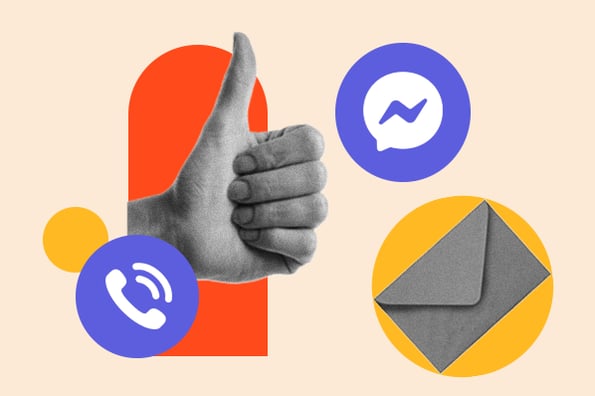
In this post, we’ll go over what omni-channel means and how you can use omni-channel experiences to create profitable marketing, sales, and service strategies.

Table of Contents
- Omni-Channel Definition
- Omni-Channel Experience Definition
- Omni-Channel vs. Multi-Channel Experience
- Omni-Channel Marketing
- How to Build an Omni-Channel Marketing Campaign
- Omni-Channel Marketing Examples
- Omni-Channel Marketing Platforms
- Omni-Channel Retail
Omni-Channel
Omni-channel, also spelled omnichannel, is a lead nurturing and user engagement approach in which a company gives access to their products, offers, and support services to customers or prospects on all channels, platforms, and devices.
Instead of only offering support on its desktop website, for example, a company would offer support through Facebook Messenger, live chat, email, and phone.
Adopting an omni-channel approach in your marketing, sales, and service strategies has plenty of benefits. The advantages include:
Greater reach.
With an omni-channel retail, marketing, or service strategy in place, you’ll be reaching your customers where they are. They no longer have to search and search to find you. No matter where they are, your team or your products are only a click, an email, a direct message, or a phone call away.
Increased profits.
If and when your prospects are ready to buy, they’ll find it much easier to make a purchase if they can find your product on multiple platforms and channels. Offering a multi-channel retail experience also ensures it’s easier for them to purchase from you again or renew their subscriptions, securing recurring revenue.
Boosted customer satisfaction.
Your customers will be happier in the long term if they feel they have several methods to reach your customer service and sales teams. Or if they can purchase your product easily regardless of their device or preferred platform. Customer satisfaction is the key to reducing customer churn and keeping them returning to you for their needs.
As you can see, creating an omni-channel experience for your customers is critical for your business's success. That said, what is the omni-channel experience?
What is the omni-channel experience?
The omni-channel experience is marketing, selling, and serving customers on all channels to create an integrated and cohesive customer experience no matter how or where a customer reaches out. The experience should be the same for customers regardless of the platform or method they choose to use.
The customer can be shopping online from a desktop or mobile device, by telephone, or in a brick and mortar store and the experience should be equally seamless.
It's important here to distinguish an omni-channel experience from a multi-channel experience. Essentially, it comes down to the depth of the integration between the channels and platforms your business is on.
Omni-Channel vs. Multi-Channel
In a multi-channel environment, the user has access to a variety of communication options that aren’t necessarily synchronized or connected. However, during an omni-channel experience, there are not only multiple channels, but the channels are connected so you can move between them seamlessly.
The difference between omni-channel and multi-channel experiences comes down to two distinctions:
- All omni-channel experiences will use multiple channels, but not all multi-channel experiences are omni-channel. You can have amazing mobile marketing, engaging social media campaigns, and a well-designed website. But if they don't work together, they don’t create an omni-channel experience for customers.
- Omni-channel experiences account for all devices and platforms. Whereas a multi-channel strategy might include two or three channels, an omni-channel experience includes all channels, platforms, and devices.
The multi-channel experience is what most businesses invest in today. They have a website, blog, Facebook, and Twitter. They use each of these platforms to engage and connect with customers. However, in most cases, the customer still lacks a seamless experience and consistent messaging across each of these channels.
An omni-channel experience accounts for each platform and device a customer will use to interact with the company — and also creates an equally efficient and positive experience across all platforms.
Creating an omni-channel experience is especially important in retail. Whether you have an omni-channel retail strategy in place or not determines how much you will sell.
Free Customer Journey Map Templates
Fill out the form to get your free templates.
Omni-Channel Marketing
Omni-channel marketing is a method where businesses promote their products and services across all channels, devices, and platforms using unified messaging, cohesive visuals, and consistent collateral. Omni-channel marketing ensures you reach customers where they are with a relevant and on-brand offer.
By uniting the strengths of each communication channel, marketing teams can use omni-channel marketing to deliver a more effective brand message. They can also reach target buyers at the right time, increasing the chances of converting them into a lead.
Omni-channel marketing uses the customers' perspectives and interests to optimize the consistency of the company's marketing messages. For instance, on Instagram and Facebook, you might only target users with a certain interest and create collateral that appeals to them specifically.
Omni-channel marketing shouldn’t be done on a whim, though. Brands should create an organized omni-channel marketing strategy to ensure they’re delivering content to their prospective buyers at just the right time.
To learn how to start implementing an omni-channel experience into your company, keep on reading. We'll even highlight some inspiring brands that are already making moves to create experiences that are more omni-channel.
How to Build an Omni-Channel Marketing Campaign
An omni-channel marketing strategy contains consistent messaging, visuals, and positioning statements across all channels, platforms, and devices. It creates a seamless brand experience for customers by ensuring that your brand is presented the same way from platform to platform.
Keep in mind that omni-channel marketing campaigns positively impact your sales and service departments, too. Why? By showing customers that you’re on all of the channels and platforms they’re on, they’ll know to expect a similar experience for their shopping and customer service experiences.
1. Start with the basics: Your website and social media channels.
Creating an omni-channel experience is a slow process. You don’t need to be everywhere all at once; you’ll get there in time. Start with your website and social media channels and nail those down before moving on to other platforms. Ensure that you’re posting consistently and engaging with users who reach out to you via those channels.
If you consistently engage with users on Instagram but don’t answer on Facebook, they’ll notice. Focusing on one and neglecting the other will make your brand look inconsistent and unprofessional.
A shared inbox can be useful for this; putting your social messages, emails, and chat threads into one place. Some social management tools, like the one in Marketing Hub, will even connect your social campaigns to your CRM, so you can keep track of visits and leads.
2. Create an app if needed.
Depending on your industry and product, you may not need to take this step. But if you sell consumer products or offer a SaaS tool — or could benefit from offering an app otherwise — consider creating an app.
If you’re a small company, you can hire a freelance developer to create an app. Just be sure to have a legitimate reason for offering an app and to think through every functionality. Read this article to learn how to make an app and the steps you should take to do it successfully.
3. Seek to solve for the customer every step of the way.
When you add a new channel to your omni-channel strategy, do it to solve for the customer at every step of the way.
It’s not just for your company to get more visibility or for you to make more sales — although those are definitely tangible benefits of establishing an omni-channel strategy. But it’s also about making sure your customer has an easy, issue-free experience. The goal of solving for your customers should inform your messaging in each channel and the way you engage with users on those channels.
4. Use the same messaging across channels, but beware of using boilerplate content.
To create a consistent experience, use the same messaging across channels. For instance, if you’re running an ad on various social media platforms, you’ll want that ad to have the same messaging. You can change the wording a bit, so long as the overall messaging is the same.
Be careful of overusing boilerplate content, however. You might run into duplicate issues that could lead to being penalized by search engines and social media platforms. Don’t just copy and paste everything left and right. Instead of always using the same phrases, create a consistent brand voice that allows you to mix it up without looking inconsistent.
5. Give customers a device- and platform-appropriate CTA.
Every time you engage with customers on certain channels — whether it’s on an ad, an organic post, a private message, a phone call, or an email — you should end the engagement with a CTA. That CTA should, of course, be device- and platform-appropriate.
For instance, a social ad should lead to a mobile website, not the desktop version of your site. You should close your email with a link to schedule a meeting, not with a link that triggers an automatic app download (your customer may not be using a mobile device to check their email).
Ensure that the CTA doesn’t throw off the customer and only extends the seamless experience you’ve already provided.
Pro Tip: If you use HubSpot's free CMS, you can try out different CTA buttons, pop-ups, and sticky CTAs. You can also A/B test variations, so that you can be sure you're creating an effective omni-channel experience.
If you need some inspiration, you can find plenty of companies that have already implemented fantastic omni-channel user experiences. Let’s take a look at them below.
Omni-Channel Marketing Examples
- Disney
- Virgin Atlantic
- Bank of America
- Oasis
- REI
- Starbucks
- Chipotle
- Timberland
- Orvis
- VIP.com
- Sephora
- Walgreens
- Topshop
- Pepperfry
- Benefit Cosmetics
- Amazon
- Barnes & Noble
- Google Chrome
- Spotify
- Apple
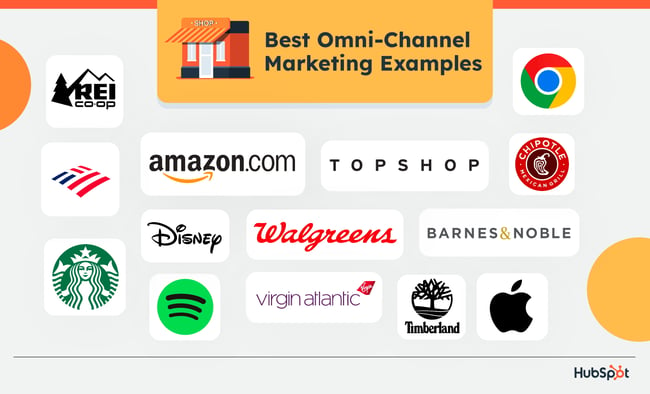
It's one thing to discuss the theory and practice of omni-channel customer experience. But it's something else entirely to see brilliant companies that are already implementing it in their strategies. Here are a few that I admire most:
1. Disney
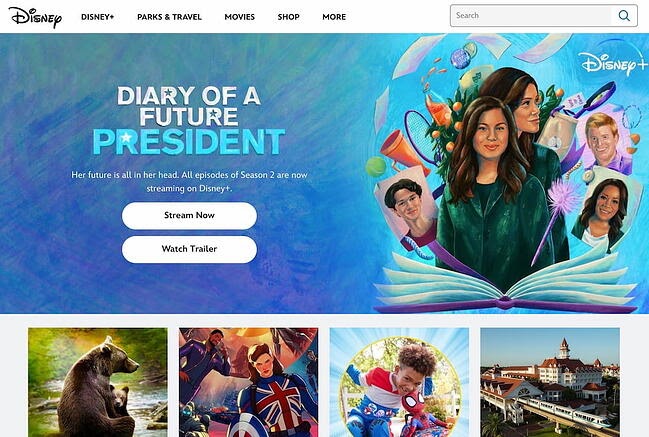
Disney gets the omni-channel experience right, down to the smallest details. It starts with your initial experience on the entertainment giant's beautiful, mobile-responsive website. Even its trip-planning website works well on mobile — that alone is something that you don't see very often.
Once you've booked a trip, you can use the My Disney Experience tool to plan your entire trip, from where you'll dine to securing your Fast Pass. In the park, you can use your mobile app to locate the attractions you want to see, as well as view the estimated wait time for each of them.
The entertainment company takes it one step further, though, with the release of its Magic Band program. This tool acts as a hotel room key, photo storage device for any pictures taken of you with Disney characters, and a food ordering tool. Plus, it even has Fast Pass integration to keep your vacation moving.
Why It Works
- Disney creates a truly omni-channel experience by providing a multitude of different features and tools for customers
2. Virgin Atlantic
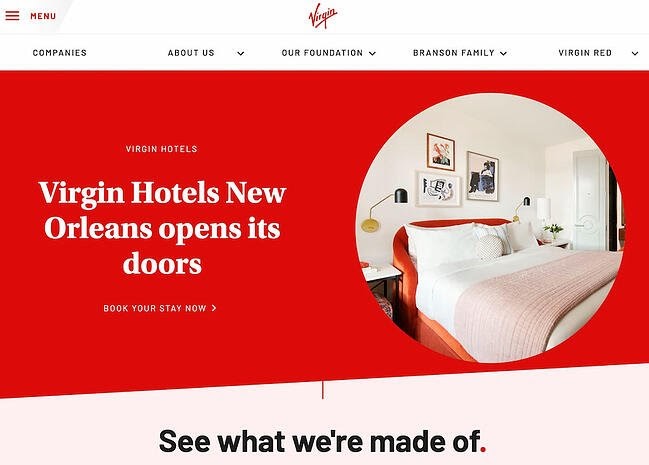
Robert Fransgaard shared an account of his amazing experience with Virgin Atlantic's omni-channel customer service experience.
In his anecdote, he shares the story of his personalized experience with a representative named Dan, who, after being the unwitting recipient of Robert's frustration over a missed engineer appointment, encouraged Robert to reach out to him directly in the event of any future issues.
Dan didn't say to call customer service, or to post another tweet to get attention. Instead, Dan reached across the company's different marketing channels to give Robert a personalized service experience.
It's amazing what a personal touch like this can do, especially when it comes to consoling customers who have had a poor experience with the company.
Virgin leads the way in many aspects of omni-channel marketing, but this account seems to best describe the types of things that can happen when all channels and employees work together seamlessly.
Why It Works
- Creating an omni-channel experience for marketing is one thing, but to provide customer service through each channel is going one step further.
3. Bank of America
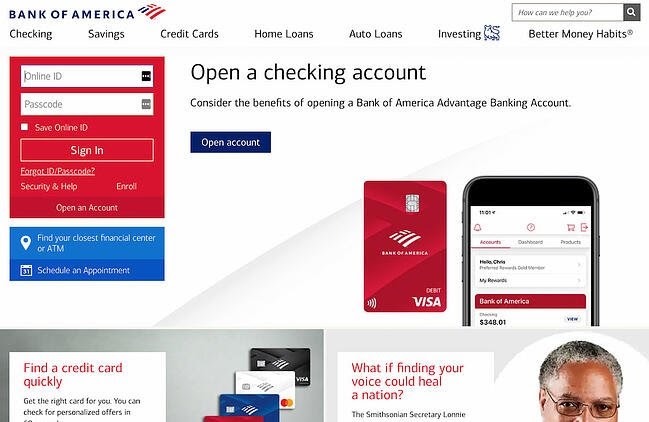
Bank of America takes its omni-channel development seriously. As one of the biggest brands in their industry, they're setting the standard for a dynamic experience, which — as of today — allows for everything from check depositing to appointment scheduling to be handled by the company's mobile and desktop apps.
Sure, Bank of America still has a ways to go. As of yet, users can't apply for loans or carry out other more complex banking needs from their phones. But other activities, such as paying your monthly bills or depositing a check, shouldn't require that level of hassle — and the company's commitment to the omni-channel experience ensures that it doesn't.
Why It Works
- Allowing customers to complete tasks from multiple channels creates the ultimate convenience.
4. Oasis

Oasis is a U.K. fashion retailer that's fusing its ecommerce site, mobile app, and brick-and-mortar stores into a simple shopping experience.
If you walk into one of its stores, you'll find sales associates armed with iPads that are available to give you on-the-spot, accurate, and up-to-date product information. The iPad also acts as a cash register, making it easy for associates to ring you up from anywhere in the store. And the cherry on top? If it appears that something is out of stock, the staff can instantly place an online order for you to have the item shipped directly to your home.
Why It Works
- The Oasis app supplements all of the in-store and online shopping experiences to go the extra mile for customer service.
5. REI
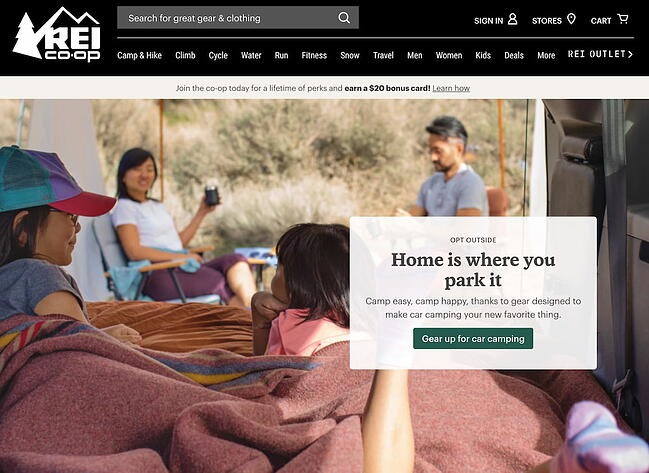
Imagine a shopper looking for an item that your website or app says is currently in stock ... but it's not. You have it in-store. That's not a great experience.
Instead, you need to make sure that each of your shopping channels works instantaneously with one another to provide something truly powerful. REI does this well through its many shopping touchpoints. With the company's omni-channel initiative, you'll find up-to-date and accurate product information at every turn.
Why It Works
- The internal communication that REI prioritizes keeps customers happy, satisfied, and returning to the store again and again.
6. Starbucks
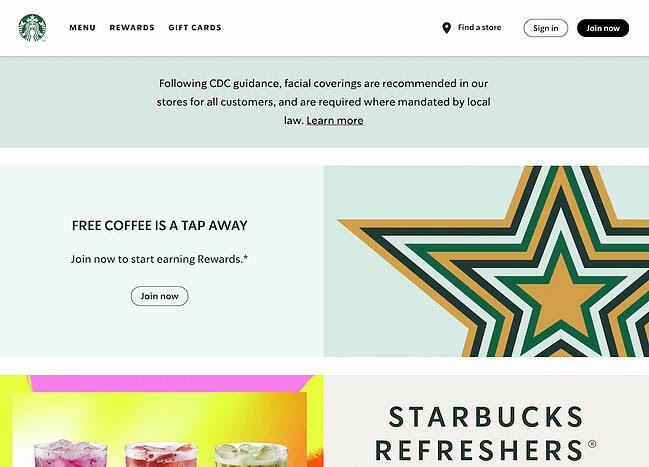
A quick look at the Starbucks rewards app will reveal why many consider it one of the top omni-channel experiences out there.
First, you get a free rewards card that you can use whenever you make a purchase. But unlike traditional customer loyalty programs, Starbucks has made it possible to check and reload your card via phone, website, in-store, or on the app. Any change to the card or your profile gets updated across all channels, in real-time.
Standing in line to get a coffee and realize you don't have enough on your balance? Reload it and the cashier will know it's been updated by the time you swipe your card.
Why It Works
- A customer’s mobile experience is more important than ever, so having a great app goes a long way.
7. Chipotle
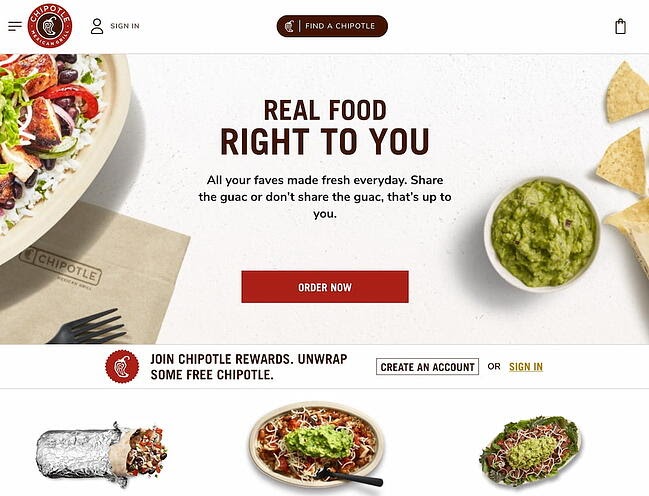
Have you ever ordered something online, only to find that the restaurant hadn't prepared your purchase by the time you arrived? I hate when that happens. What's the point of an online ordering system if I have to come in and wait for my order anyway?
Chipotle seeks to eradicate that frustration with its online experience. Its online system and mobile ordering app allow you to place an order wherever you are.
On-the-go and need a quick way to order? Signing up for an account allows you to save your favorite orders for a quick and seamless experience. Want to take up requests from everyone around the office? Place an order online for the whole team and have it ready by the time you arrive.
With omni-channel, it's all about making the customer's life as easy as possible. And with its easy-to-navigate tools that provide on-the-go ordering access, Chipotle does a great job at delivering that.
Why It Works
- Convenience and speed are highly important when it comes to casual dining, so this experience is great for customers.
8. Timberland
Timberland creates a connective customer experience in its brick-and-mortar locations by utilizing near-field communication technology. Near-field communication technology is the software that's responsible for data transfer tools like Apple Pay and Android Pay. This technology allows users to tap their mobile device against a special chip that wirelessly transfers information between the two devices.
Rather than using it for ecommerce, Timberland makes use of this technology in its stores by giving shoppers a tablet that can be pressed against products and signage throughout the location. When the tablet is pressed against the chip, information about that product or offer is displayed on the tablet. Customers don't have to seek out store clerks for more information and can easily see the deals that are offered for each product. As shoppers continue to look up different items, the personalization software on the tablet begins to make product suggestions for the user based on their shopping history.
Why It Works
- The individualized experience for the customer highlights products that may be often overlooked.
9. Orvis
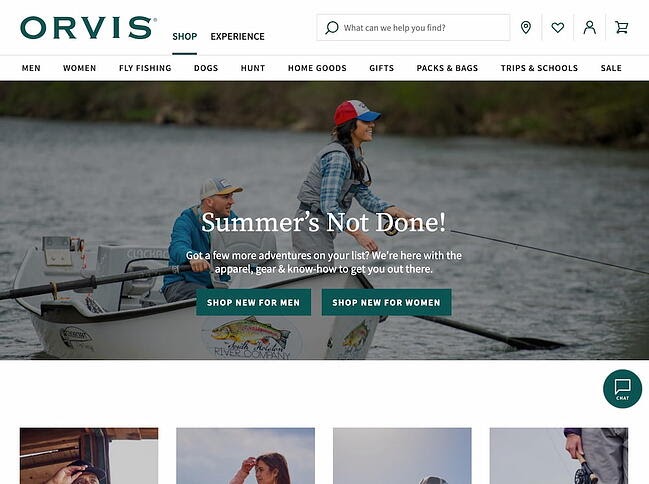
Orvis is a sporting goods retailer that has won awards for its omni-channel strategy. How, you might ask? Orvis understands its target audience and knows the most effective ways to communicate with them.
Orvis used first-party data to discover that its target audience consisted primarily of affluent customers who were age 50 and older. The company understood that while this demographic hasn't fully adopted digital technology yet, they have shown a genuine interest in using modern ecommerce tools.
So to help, Orvis gave their employees tablets that had CRM and ecommerce tools pre-installed. These tools can order out-of-stock products to the store as well as charge customers for both online and in-store purchases. If customers need assistance with a product, they can find a rep and use their tablet to learn more about an offer.
While this not only improves customer experience, Orvis's marketing team also benefits from the information they gather from customers. The CRM tools on the tablet record customer information so that employees can recognize loyal customers when they walk into a store. Employees record their shopping habits and purchase history, giving more insights to their marketing teams who are looking to deliver a more effective offer.
Why It Works
- Being able to simultaneously provide a great experience to customers and essential data to a marketing team is dually beneficial.
10. VIP.com

VIP.com is a leading ecommerce marketplace that operates in China. The company is a B2B website that charges retailers that sell goods on its platform.
VIP.com delivers an omni-channel experience through how it helps retailers connect with potential leads. When retailers post new products on VIP.com, the site's geolocation tools send push notifications to customers who are located in the retailer's area. These leads can then visit the store directly, or have VIP.com deliver the order for them.
Geo-location data can be highly valuable for companies that are looking to deliver an omni-channel experience. When customers sign up to use a product or app, the app will ask permission to access the user’s location. Companies like VIP.com capitalize on this information by delivering offers that are timely and relevant to potential customers.
Why It Works
- The geo-location data provides a unique and custom way to cater to customers.
11. Sephora
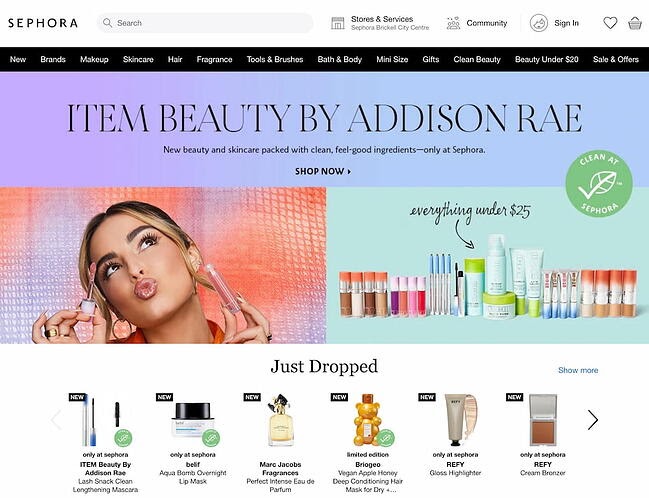
The beauty giant Sephora creates an omni-channel experience that connects its shoppers' online purchases to their in-store visits. In addition to beauty workshops and complimentary makeovers, customers can use in-store tablets to access their "Beauty Bag" account while shopping.
This account allows them to look up item details and virtually try on products using digital software. If they like a product, they can add it to a wish list and purchase the entire list using the app.
Why It Works
- By integrating its Beauty Bag feature with its in-store communication channel, Sephora pushes customers to make purchases by helping them narrow options from their wide variety of products.
12. Walgreens
Walgreens has created an omni-channel pharmaceutical experience by using its mobile app as a primary tool for brand communications. Customers can use the app to check and refill prescriptions without having to call their pharmacy. They can also set up reminders that alert the customer if a prescription needs to be renewed.
While the Walgreens app doesn't have any groundbreaking features, it offers a lot of convenience to customers. Rather than having to call and set up a prescription with the pharmacy, customers can do everything through the app. This eliminates potential hold times and can reduce the waiting time for in-store pick-ups.
Why It Works
- The fundamental tools offered by the Walmart app do a lot to completely improve the shopping experience for customers.
13. Topshop

Topshop (now owned by ASOS) is a UK-based fashion brand that produces trendy clothing for women. As part of its marketing campaign for London Fashion Week, the company launched a series of digital billboards that were displayed throughout the United Kingdom.
Each billboard was synced with the company's Twitter data, so when followers would tweet using the hashtag "#LFW," the billboard would display the tweet alongside a relevant item from Topshop's catalog. This way, fans of fashion week would know where to shop whenever the latest trend was being talked about online. And, each billboard was placed within a 10-minute walk from the company's stores, so viewers didn't have to travel far after seeing the advertisement.
Why It Works
- The attention-grabbing nature of billboards makes this approach more effective in other channels as well.
14. Pepperfry
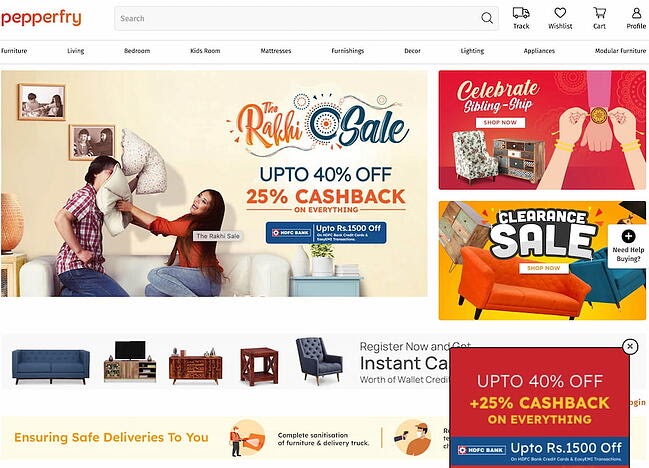
Pepperfry is a home furnishings company that's based in India. It was built by two friends who wanted to create a delightful customer experience for purchasing furniture.
Pepperfry accomplishes this goal by pairing its online store with an immersive in-person experience. Customers can shop for a product online, look for furniture they like, then travel to a "Studio Pepperfry" to see what the products look like in person.
Once there, customers tour the studio with a Pepperfry design consultant. The consultant helps them find their ideal home decor and makes suggestions to ensure customers don't experience buyer's remorse. When customers find the furniture that's right for them, they can either buy the product in-store or return home to buy it online. This reduces friction between customers and salespeople as leads don't feel as pressured to make an in-store purchase.
And, this investment seems to be paying off for Pepperfry as the company reports that 10-15% of its sales come from these studio locations.
Why It Works
- Intertwining the online experience with the in-person experience makes it easy for customers to make choices about products.
15. Benefit Cosmetics
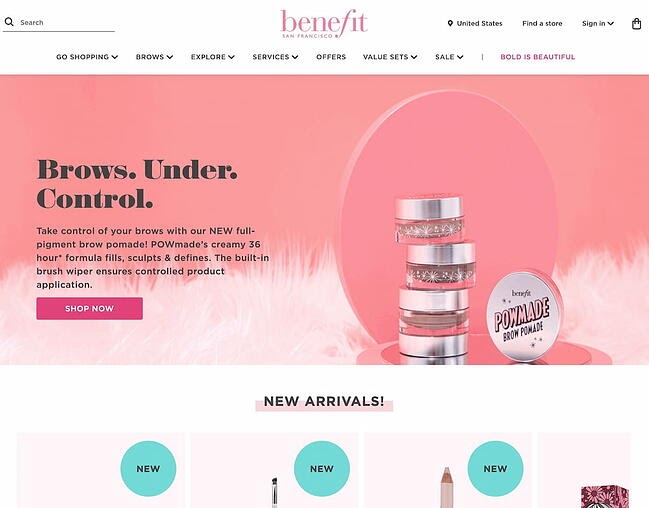
Benefit Cosmetics launched a memorable omni-channel campaign when it brought "brow bar" experiences to its UK customers.
After hosting a competition in the UK, Benefit Cosmetics traveled across the region and provided brow bars to its contest winners as part of its "BrowMobile" campaign. It also hosted a beauty drive-thru where customers could receive free eyebrow waxes and product samples.
The company's former head of brand activation, Kyra White, noted that this campaign "shows customers that we're happy to go to them anywhere. Plus it's Instagrammable, which is great for a brand like ours which doesn't do traditional above-the-line advertising."
White isn't exaggerating either, as this campaign helped the company increase its market share for brow-products to 60% in the UK market.
Why It Works
- Making products in a way that’s mobile adds a whole new channel for marketing.
16. Amazon
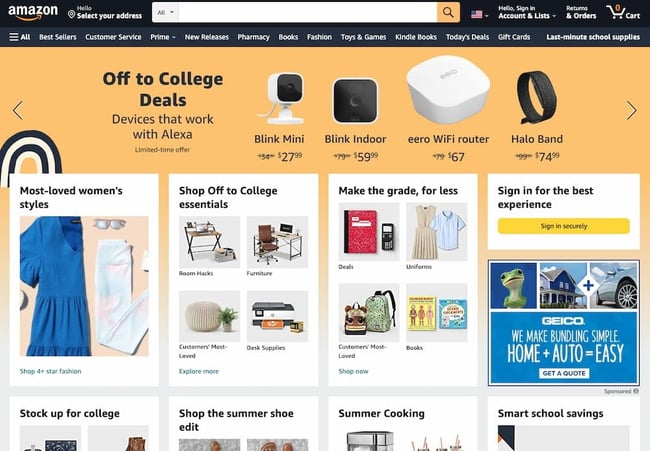
Amazon is the king of the omni-channel experience in the consumer retail space. Not only does it have an app and website that automatically syncs users’ carts when users are signed in, but it also offers a support experience that gives customers the option to choose whatever method they’re most comfortable with.
Why It Works
- The omni-channel experience that Prime members receive gives them access to the benefits of membership on any device or platform.
17. Barnes & Noble
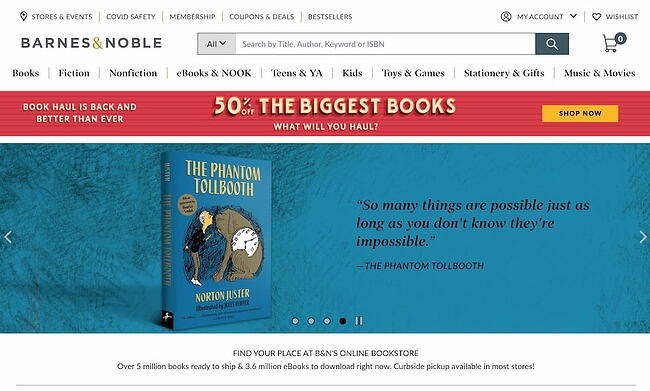
Brick-and-mortar bookstores may be considered a thing of the past, but Barnes & Noble wins at giving their members and customers the traditional brick-and-mortar experience while staying agile in the marketplace. Whether you access its offerings through the Nook app, the mobile website, the desktop website, or the physical store, you’ll have similar, if not identical, experiences.
It adds another layer on top of these omni-channel experiences: An in-store cafe where customers can sit and read. Aside from being able to access the store’s products on whatever platform they choose, customers are also allowed to have a traditional cafe experience.
Why It Works
- Having a mobile experience in addition to a place for customers to read their books creates a personal connection.
18. Google Chrome
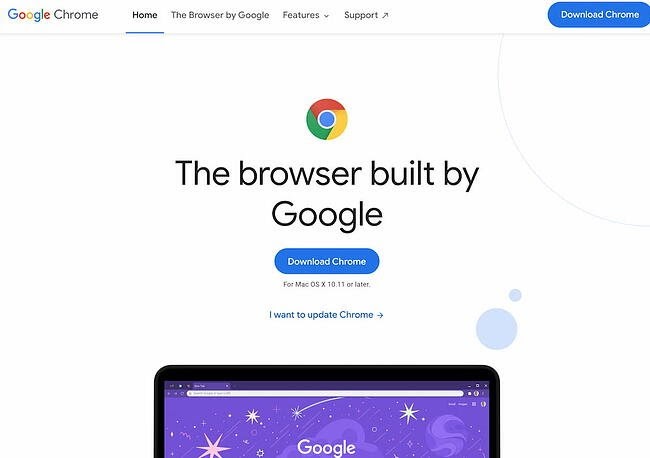
Google is another champion for omni-channel experiences, and a particular example is its browser, Google Chrome. When users are logged into their Google accounts, their history and activity are automatically synced into every device. Users can even access tabs on their phone app that they left open on their laptops.
This seamless synchronization allows users to have a seamless experience regardless of the device they use to access Chrome. The result? Google Chrome holds the majority market share — above 65% on average — in the internet browser industry. That shows just how important it is to offer an omni-channel experience not just through your marketing, sales, and service efforts, but through your product, too.
Why It Works
- Google’s wide reach means that it can create the smoothest, harmonious omni-channel experience for customers.
19. Spotify
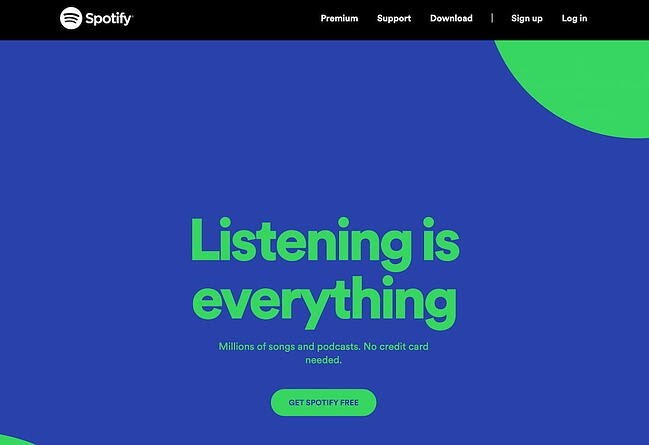
Spotify is another great example of offering an omni-channel experience at a product level. The company not only has a web app, a desktop app, and a mobile app, it also syncs among all apps when you have them open at the same time. If users are listening to Spotify on their phones, the desktop app will show the song that’s currently in progress.
Why It Works
- Spotify’s availability on most platforms and devices provides an omni-channel experience with very little variation in the actual user experience.
20. Apple
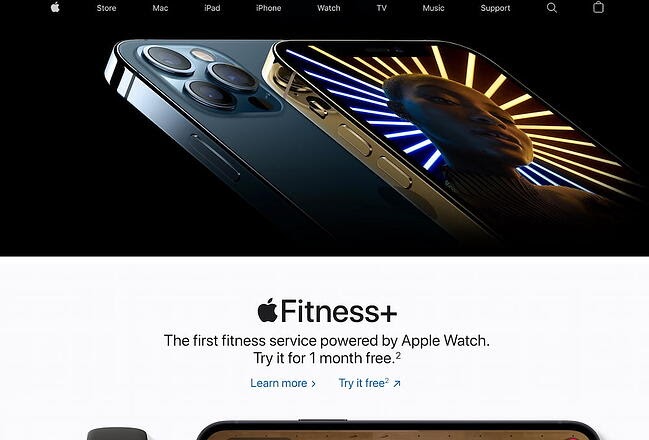
Apple takes the omni-channel experience to the next level by offering devices that seamlessly communicate with each other using the user’s iCloud account. The user’s messages, photos, and connected devices display the same way regardless of the Apple device the customer is currently using. Once a customer sets up an Apple device and signs in using their iCloud account, all pertinent information, data, and settings are downloaded to the new device.
While reaching this sort of interconnectivity between your company’s products and services may seem like a difficult task, you can emulate Apple’s omni-channel experience by ensuring that customers don’t have to repeat information when they call your team.
For that, you might use a CRM such as HubSpot that stores every single interaction your customer has had with you. Whether they use email, phone, or chat to speak with your team, the customer should have a frictionless experience. That’s what building an omni-channel strategy is all about.
Why It Works
- The connectivity between devices, accounts, and platforms makes it easy for customers to transition between all of them.
Omni-Channel Marketing Platforms
Without the right platform, omni-channel marketing can easily fall short. Spreading your resources across each platform must be done efficiently to be truly beneficial for your business. Platforms that are created for omni-channel marketing will help your business seamlessly operate across channels. These three below were designed for exactly that.
1. HubSpot CRM
The complete CRM platform that HubSpot offers is an all-in-one marketing automation tool. It’s functional and flexible to fit your business needs. Whether your focus is to grow sales, increase leads, improve customer service, or build a website, HubSpot CRM can do it all — across each platform. The HubSpot platform is comprised of five hubs: Marketing Hub, Service Hub, CMS Hub, Sales Hub, and Operations Hub. Each hub is packed with powerful features to help grow your business.
Why It Works
The “Hubs” simplify the full funnel process of attracting and converting prospects to your business, and they work together seamlessly.
2. Shopify
Although this platform is a robust ecommerce product, Shopify does a great job as an omni-channel marketing tool. In addition to selling products, Shopify helps you to create powerful email and social media ad campaigns. It also covers engagement through every stage of the customer acquisition funnel. All in all, this tool helps businesses develop personalized experiences for their audience, optimize their sales to generate more revenue, and measure the impact of the marketing campaigns they run.
Why It Works
- Shopify specializes in generating sales by using proven marketing channels like email and paid ads so your business will be equipped to manage long-term revenue growth.
3. ActiveCampaign
This platform combines a variety of automation, marketing, and CRM tools to create great experiences for your business and your audience. The features are segmented into four goals defined by your interactions with leads: Reach, Nurture, Convert, then Grow. This platform also offers not just customer support, but free online training so you can become an expert in using it to the highest degree.
Why It Works
- This platform is “stackable,” meaning you can mix and match different tools, applications, and channels to build it into exactly what your business needs.
Omni-Channel Retail
Omni-channel retail refers to the method of putting your products and services up for sale on all channels and platforms to increase reach, reduce friction, and boost sales. An omni-channel retail experience will include brick-and-mortar stores, app-based options, and online platforms.
For instance, a clothing brand might sell its products on its website, app, Instagram’s “Shopping” tab, and Amazon, as well as brick-and-mortar stores.
Omni-channel retail mainly applies to retail-based business-to-consumer (B2C) industries such as clothing, consumer goods, food and beverage, and others. Business-to-business (B2B) companies can simulate an omni-channel retail environment by allowing prospects to request demos, ask for quotes, or schedule consultations across various channels and platforms.
To give an example, you could create an app that allows prospects to tour your product on their phone, you could add a “Request Consultation” button on your Facebook profile, and you could use Facebook Messenger to provide quick quotes.
Payment links are another way to connect your retail experience. Payment tools like HubSpot Payments let you embed payment links into emails, quotes, invoices, text messages, or even chat windows.
Whether in a B2B or B2C environment, omni-channel retail is most powerful when paired with an omni-channel marketing strategy.
Companies use an omni-channel marketing approach to align their messaging, goals, objectives, and design across each channel and device. Omni-channel marketing can be a valuable asset for businesses that are looking to deliver a better customer experience.
Creating an Omni-Channel Experience is the Key to Future Success
Every company must develop its own unique omni-channel experience infrastructure, and you'll need to work closely with several departments in your company to develop this strong strategy.
While building your program, look to the following stakeholders:
- Product
- Marketing
- Sales
- Customer Support
- Customer Success
Once everyone understands the goals and objectives of your omni-channel initiative, you can start planning your transition to this model. Including these departments early on will make it easier as you try to shift into an omni-channel way of doing things — it's less of a headache down the road when you get people excited in the beginning.
Ultimately, your strategy should consist of a strategic plan to build a coherent, aligned experience across multiple platforms. Because this is still a relatively new emerging concept, there's still time to start small and expand in the future.
Certainly, omni-channel user experiences still have a long way to go, and the scale of some of the integrations described above may make the entire endeavor feel out of reach for smaller companies.
But I don't think we're that far away from a world where omni-channel is accessible to brands of all sizes. Technology has come a long way over the past decade, and there's no doubt in my mind that future changes will make it possible for even the smallest of companies to engage directly with customers — no matter where they are, what they're doing, or what device they're using.
Editor's note: This post was originally published in December 2017 and has been updated for comprehensiveness.

-2.png)

![Customer Experience vs. User Experience: What’s the Difference? [+ Examples]](png/cs%20vs%20ux.png)
![What is customer sentiment? [Expert Insight]](png/customer%20sentiment.png)
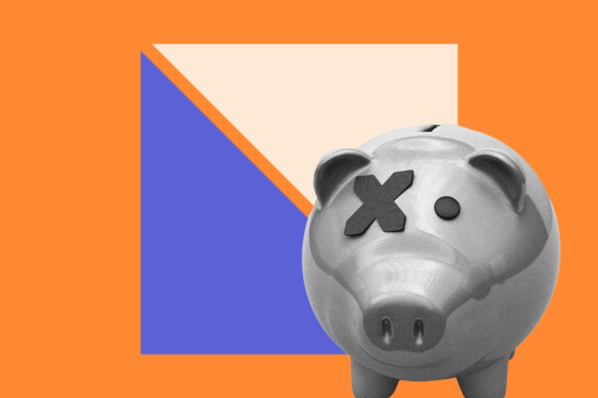

![How to Create an Effective Customer Journey Map [Examples + Template]](webp/customer-journey-map_13.webp)
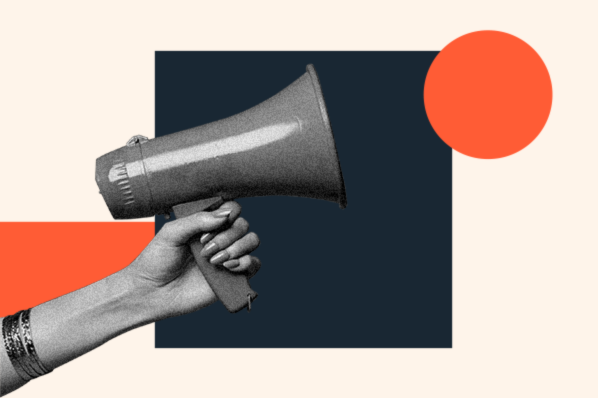
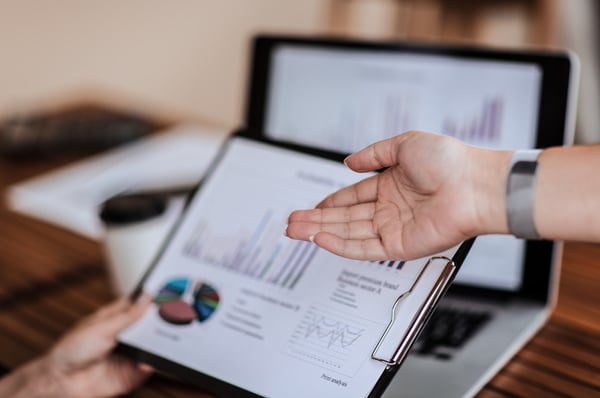
![Is The Customer Always Right? [What It Means + Why It Matters]](jpg/is%20the%20customer%20always%20right_featured.jpg)